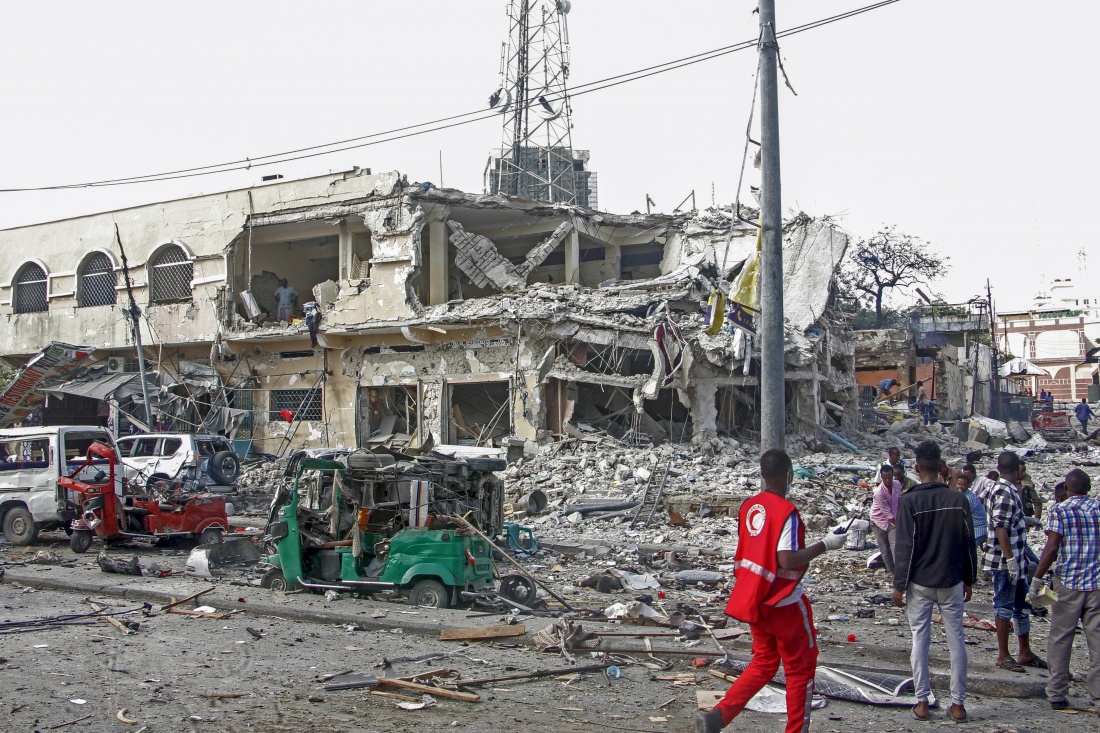Making Crisis Inevitable: The Effects of U.S. Counterterrorism Training and Spending in Somalia

"People observe a destroyed building and vehicles at the scene of a two car bombs attack in Mogadishu, Somalia, Saturday Oct. 29, 2022, leaving "scores of civilian casualties," police told state media." (AP Photo/Farah Abdi Warsameh)
The United States government says its goals in Somalia are to eliminate Al-Shabaab and promote peace and reconciliation. But its policies are having the opposite effect, not just contributing to conflict, but ensuring it continues in perpetuity.
The U.S. spends more on counterterrorism in Somalia each year than the Federal Somali Government earns in tax revenue, flooding Somalia with funding for militarized counterterrorism and thereby diverting resources away from real conflict resolution solutions. This report calculates that the United States has disclosed spending over $2.5 billion on counterterrorism assistance in Somalia since 2007, most of which consisted of State Department funding. Notably, this total excludes spending on U.S. military and intelligence operations in Somalia, both of which are undisclosed.
The report details how militant groups carrying out terrorist attacks have only proliferated in the wake of U.S. counterterrorism efforts in Somalia, in part because U.S. efforts favor the centralized Somali government, which is at odds with the decentralized dynamics of Somali politics, and thus undermined the kinds of bottom-up peace building efforts that have been proven successful in other parts of the region. The paper also details how Somali forces trained by the U.S. have been co-opted and misused by the Somali political elite for purposes like bodyguard duty, roadblock policing, or attacking political opponents. These forces are exacerbating conflict.

